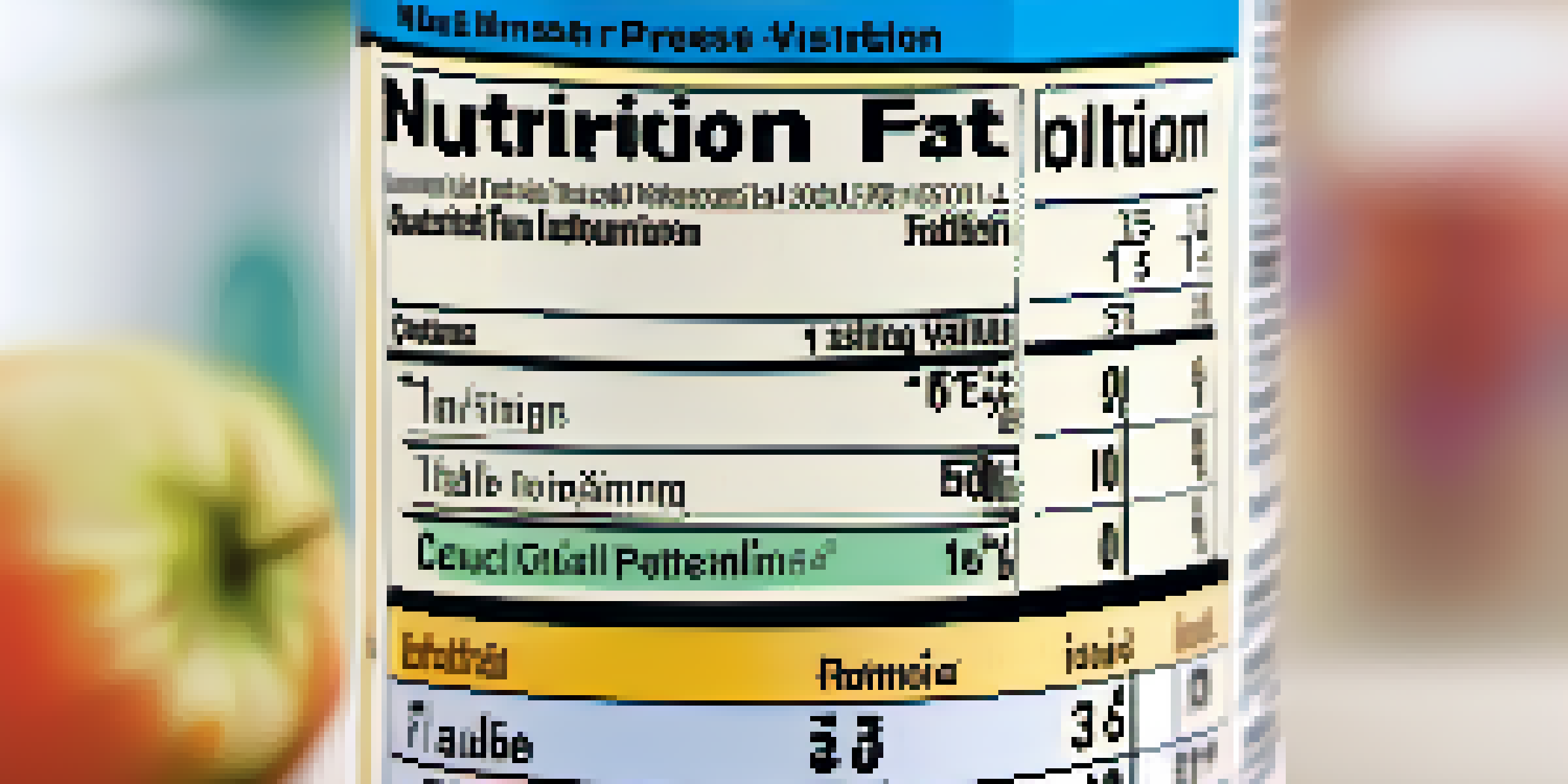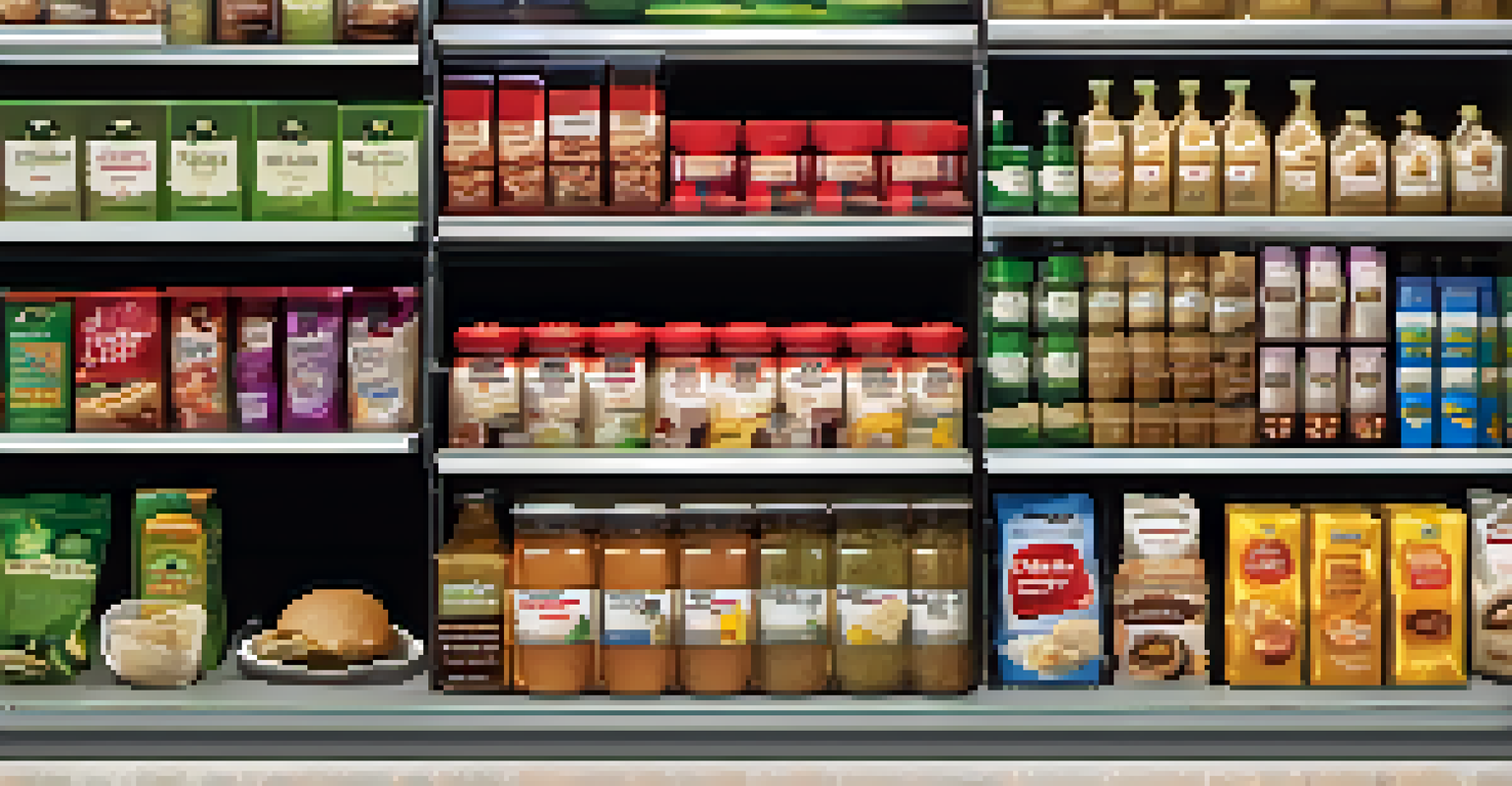Understanding Food Labels: A Culinary Medicine Perspective

The Importance of Food Labels in Health Choices
Food labels are more than just a regulatory requirement; they are your roadmap to better health. Understanding what’s in your food can empower you to make more informed choices. With rising health concerns, such as obesity and diabetes, knowing how to read food labels becomes essential for everyone seeking a healthier lifestyle.
Let food be thy medicine and medicine be thy food.
When you glance at a food label, you’re not just looking for calories; you’re deciphering a wealth of information that can impact your health. Ingredients, serving sizes, and nutrient content can all play a significant role in how your body responds to what you eat. Essentially, food labels serve as a guide to making choices that align with your health goals.
Incorporating food labels into your daily routine can foster a deeper relationship with what you consume. By taking the time to read and understand these labels, you can instill healthier eating habits and steer clear of processed foods laden with hidden sugars and unhealthy fats.
Decoding Nutritional Information on Labels
Nutritional information is usually displayed in a straightforward table format, but it can still confuse many consumers. Key elements like calories, fats, proteins, and carbohydrates are listed, but the real challenge is knowing what those numbers mean for you. For instance, understanding the difference between total fat and saturated fat can help you make better choices for your heart health.

One helpful tip is to look at the serving size listed at the top of the nutritional label. Many people overlook this, leading to unintentional overconsumption. By paying attention to serving sizes, you can better gauge how much of a product you’re actually consuming and how it fits into your overall diet.
Food Labels Empower Health Choices
Understanding food labels helps you make informed dietary decisions for a healthier lifestyle.
Moreover, it's essential to recognize that not all fats are created equal. For example, monounsaturated and polyunsaturated fats can actually be beneficial for your heart, while trans fats can pose serious health risks. Knowing this can guide you in selecting healthier options that promote well-being.
Ingredient Lists: What to Look For
The ingredient list on a food label can often reveal more than the nutritional information. Ingredients are listed in descending order by weight, meaning the first few items usually make up the bulk of the product. If sugar or unhealthy fats appear near the top, it may be a red flag indicating a less nutritious choice.
You are what you eat, so don't be fast, cheap, easy, or fake.
A good rule of thumb is to look for products with short ingredient lists containing recognizable items. If you can’t pronounce an ingredient or it sounds like a chemistry experiment, it’s wise to question its health implications. Whole, minimally processed foods typically have fewer ingredients and can be a better option for your health.
Additionally, keep an eye out for common allergens and additives. Some additives might seem harmless, but others could trigger sensitivities or long-term health issues. Being vigilant about what goes into your food helps foster a more conscious and healthier food selection process.
Understanding Dietary Guidelines and Claims
When shopping, you’ll often encounter various dietary claims like 'low-fat,' 'sugar-free,' or 'organic.' While these terms can be helpful, they can also be misleading. For example, a 'low-fat' product may compensate for reduced fat content with added sugars, which could negate any health benefits.
It's crucial to understand that not all claims are equally regulated. Terms like 'natural' or 'healthy' can vary in meaning, and sometimes they don’t hold much weight in terms of actual health benefits. Familiarizing yourself with these claims can help you make smarter decisions while grocery shopping.
Decipher Nutritional Information
Knowing how to read nutritional labels, including serving sizes and types of fats, is essential for making healthier food selections.
Moreover, always check for certifications or seals on the packaging, as they can provide additional assurance regarding quality. For instance, organic products must meet specific guidelines, which can help you feel more confident about the integrity of what you’re consuming.
Serving Sizes: A Key to Portion Control
Serving sizes can often be misleading, and understanding them is crucial for portion control. Many products may contain multiple servings in one package, which can lead to unintentional overeating if you’re not careful. Always check the serving size before digging in to ensure you're not consuming more than you intended.
Visualizing serving sizes can also be helpful. For instance, a single serving of pasta might be about the size of a fist, while a serving of nuts could fit in the palm of your hand. By using these visual cues, you can better manage your portions and maintain a balanced diet.
Incorporating portion control into your routine can lead to healthier eating habits and prevent excessive calorie intake. Over time, this awareness can help you maintain a healthy weight and support your overall well-being.
The Role of Added Sugars in Your Diet
Added sugars are often hidden in many processed foods, making them a sneaky culprit in unhealthy diets. They can contribute to various health issues, including obesity and heart disease. It’s important to identify foods high in added sugars by checking the nutritional label, as they can significantly increase your daily calorie intake without providing any nutritional value.
Look for terms like corn syrup, cane sugar, and fructose in the ingredient list. If these appear early on, it’s a strong indication that the product is loaded with sugars. By reducing your intake of these added sugars, you can enhance the nutritional quality of your diet.
Beware of Added Sugars
Identifying and reducing added sugars in your diet can significantly improve your overall health and well-being.
Balancing your sugar intake is crucial, and choosing whole foods over processed options can help you manage your sugar levels effectively. Opting for natural sweeteners like honey or maple syrup in moderation is also a healthier alternative.
Making Informed Choices Based on Food Labels
Ultimately, the goal of understanding food labels is to empower you to make informed decisions that align with your health goals. Each time you shop, take a moment to read the labels and reflect on what you’re putting into your body. This small habit can lead to significant changes in your overall dietary choices.
Consider keeping a food diary to track what you eat and how it aligns with the information from food labels. This can help you identify patterns and make adjustments as needed. Over time, you’ll develop a more intuitive understanding of what works for your body.

Remember, knowledge is power! By taking control of your food choices through label reading, you’re investing in your health and well-being. Every little step counts toward a healthier lifestyle.